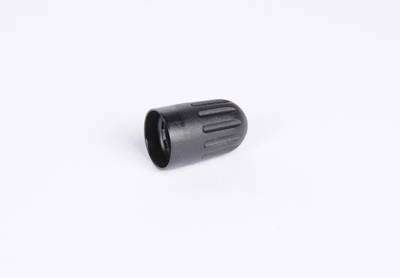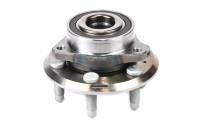Q: Do I really need a tire pressure sensor?
A: Yes, you cannot always tell when a tire is under-inflated by just looking at it. Not only is there a safety issue of driving on an under-inflated tire, but proper tire inflation can save you money. Properly inflated tires will get your vehicle better gas mileage.
Q: If the battery dies on my tire pressure sensor can I just replace it?
A: No, once the battery dies the entire sensor must be replaced.
Q: Is there a sign to let me know when to replace my tire pressure sensor?
A: Yes, if the TPMS light appears as a BLINKING yellow lamp for more than one minute and then stays on solid, then diagnostic service is needed and one or more sensors may need to be replaced. If TPMS is not functioning properly, it cannot detect or signal a low tire condition. Some vehicles may also display ‘Service Tire Monitor System' on the driver information center.
Q: Will the tire pressure sensor indicate if I have over-inflated my tires?
A: No, it is important to look at the PSI number in the inside door panel of your vehicle to make sure you get the proper tire inflation, and most newer cars will let you check your PSI right on your vehicles dashboard. Over-inflated tires can cause extra wear to your tires.
Q: Is there a difference between a Low Tire and a system malfunction?
A: Yes. A Low Tire telltale will be on solid immediately after KEY ON, and will be accompanied by a CHECK TIRE PRESSURE message in the Driver Information Center (if equipped). A system malfunction causes the telltale to flash for the first 60 seconds of a KEY ON event, and then go solid. *Tip: These behaviors repeat at each KEY ON cycle. The best way to diagnose the vehicle (if you're not sure which warning is being displayed) is to KEY OFF and KEY ON again while watching the telltale and DIC messages.
Q: Is Sensor Learning required?
A: Yes. Sensor Learning should be done when the vehicle's tires are rotated (since sensor position on the vehicle has changed) or when a sensor is replaced/a new sensor is installed (since a new ID has been introduced to the vehicle). Sensor Learning is not required when simply correcting the tire pressure resolves the vehicle problem.
Q: Is there a reason why there are dashes (- -), or a pressure value of 148?PSI (1020?kPa), sometimes displayed after a battery disconnect?
A: Yes. These displays come up after a battery disconnect/reconnect because the system is waiting for updated pressure information to be sent from the tire pressure sensors. As each sensor transmits its information, the display is updated appropriately. Note that when dashes or 148?PSI (1020?kPa) are displayed after a battery disconnect/reconnect, the System Malfunction warning is NOT displayed - because the system is still working properly, and simply waiting for updated information from the sensors. Driving the vehicle above 20?mph (32?km/h) for 2 minutes gets the sensors talking, and restores the correct pressure values to the display. It is also possible to restore the values by using the J-46079 TPM tool, using the ‘Activate' function at each tire to activate the sensor (it is NOT necessary to put the system into Learn mode, in this special case).



Write the First Review!